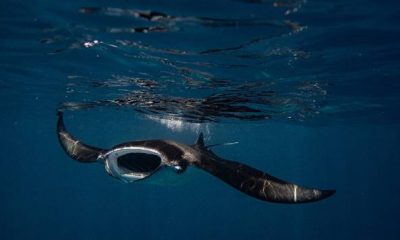Featured
Researchers in Maldives obtain first ever underwater ultrasound scans of wild reef manta rays

A team of international researchers working with Six Senses Laamu in Maldives has obtained the first ever underwater ultrasound scans of wild reef manta rays.
The team of researchers from the University of Cambridge and the Manta Trust worked together with the Maldives Underwater Initiative (MUI) at Six Senses Laamu resort in the unexplored Laamu atoll to successfully scan a pregnant wild reef manta ray underwater to obtain clear ultrasound images of her foetus, using the world’s first contactless underwater ultrasound scanner.
Two years ago, MUI brought together some of the great minds in veterinary technology and challenged them to create a device that could ultrasound scan Laamu atoll’s resident population of reef manta rays (Mobula alfredi).
“MUI aims to be a marine conservation visionary,” Marteyne van Well, the General Manager at Six Senses Laamu, was quoted in a statement issued by Six Senses, saying.
“One of the ways we’re leading conservation efforts in the Maldives is by providing a platform for discussions on, and the field testing of, this world-first technology.”
Following a visit to Six Senses Laamu, Vetsonic (UK) Ltd Founder Ray Rochester approached veterinary imaging leaders IMV Imaging with the idea of developing a scanner to meet the rigours of diving at Manta Point, a manta ray cleaning station just a 10-minute boat ride from the resort that researchers from the Manta Trust have been studying since 2014.
IMV Imaging’s Duo-Scan:Go Oceanic is the first ever technology to allow contactless scanning of wild marine animals at depths of up to 98.5 feet (30 metres), whilst also being portable (the dive rig weighs less than 4.5 pounds (2 kilograms). The aim of bringing this technology to Laamu was to scan wild pregnant reef manta rays in order to study gestation and embryonic development.
“We know very little about where these reef manta rays go to give birth and how long gestation lasts in the wild. This ultrasound technology could allow us to determine rates of reproduction in the wild and this information would help guide conservation strategies for this threatened species,” Nicole Pelletier, Manta Trust Project Manager at Six Senses Laamu, said.
The research project is taking place in Maldives, which has the largest population of reef manta rays in the world. The team hopes that their work will help establish the factors responsible for annual fluctuations in breeding and discover why animals breed in certain areas but not others.
Manta rays are close relatives of sharks and rays. The largest individuals can reach as many as seven meters in width and weigh up to two tonnes. However, despite their size, and compared to some of their close relatives, mantas are gentle creatures.
Mantas are found throughout the tropical and sub-tropical oceans of the world. The animals never stop moving, as they must keep water flowing over their gills to respire. Their daily and seasonal movements are tuned to the ebb and flow of the ocean currents that carry the planktonic food upon which they depend.
“Manta rays are one of the most beautiful and iconic creatures that swim in our oceans,” Dr Gareth Pearce, from the Department of Veterinary Medicine at the University of Cambridge, was quoted in a statement issued by Manta Trust, as saying.
“Unfortunately, like many animals, their future is threatened. They are increasingly fished, both deliberately and through bycatch and their populations are now at risk.”
In recent years, manta ray populations have become threatened through bycatch in fisheries targeting other species, such as tuna and swordfish, but also because their gill plates have recently become sought after for use in Asian medicine.
Working with the Manta Trust, Dr Pearce and PhD student Niv Froman use the new ‘Duo-Scan: Go Oceanic’ ultrasound scanner to study the reproductive ecology of manta rays. To scan the manta rays, researchers dive down to a ‘cleaning station’ where smaller fish remove parasites from the mantas’ skin. These stations are typically 20-30 metres down, often with poor visibility and potentially strong ocean currents.
The diver then approaches a manta from above to avoid disturbing the animal. He positions the scanner 4-5cm above the surface of the manta, targeting the left side of the dorsal fin, which is where the reproductive structures such as the ovaries and the uterus are visible.
“It’s important not to cause the manta ray any stress,” Froman explained.
“Using these portable scanners, we’re able to obtain ultrasound images of their internal structures, particularly their reproductive tracts, without disturbing the animal. This is the first time that this has been possible in free-swimming mantas.”
The scanner enabled the team to obtain the first-ever scans of wild reef manta rays, including pregnant and non-pregnant females, as well as mature males.
“Using the scans, we’re able to determine the stages of maturity and when animals are becoming reproductively active. We can observe the stages of pregnancy, the development of the foetus and importantly, whether an animal maintains that pregnancy and gives birth to a live animal,” Dr Pearce said.
“Ultimately, our work aims to inform the conservation of manta rays both in the Maldives and other areas of the world, enabling the populations to survive and hopefully flourish. Our hope is that this research project will contribute to conserving the species for future generations.”
Sightings of the animals in the Maldives are reliable and consistent, allowing the researchers to take images of the same animal multiple times throughout its gestational period, which lasts just over a year.
“When the project began, none of the team knew whether scanning wild reef manta rays would even be possible. What has been achieved is beyond what we could have hoped for,” Dr Guy Stevens, Co-Founder and Chief Executive of the Manta Trust, said.
“Manta rays are threatened worldwide and we still know so little about their reproductive strategies. The ability to scan pregnant individuals will be invaluable in our quest to protect them.”
According to IMV-imaging, the ‘Duo-Scan: Go Oceanic’ represents significant improvements on previous technologies. It can be taken to depths of up to 30 meters and —with the assistance of Wi-Fi and a smartphone as a viewing screen—it is small enough to fit in the palm of your hand.
“What we are really excited about is the contactless nature of this technology. There are significant benefits for animal welfare, but you also open up a whole range of possible applications if you can scan animals that ordinarily wouldn’t let you get close enough to touch them,” Alan Picken, Chief Executive of IMV-imaging, said.
The Cambridge researchers, in collaboration with a team from the Manta Trust, verified that the contactless technology works in the field tests carried out in collaboration with the Vetsonic (UK) Ltd and Six Senses Laamu.
Featured
Huvafen Fushi partners with Forbes Travel Guide in pursuit of five-star status
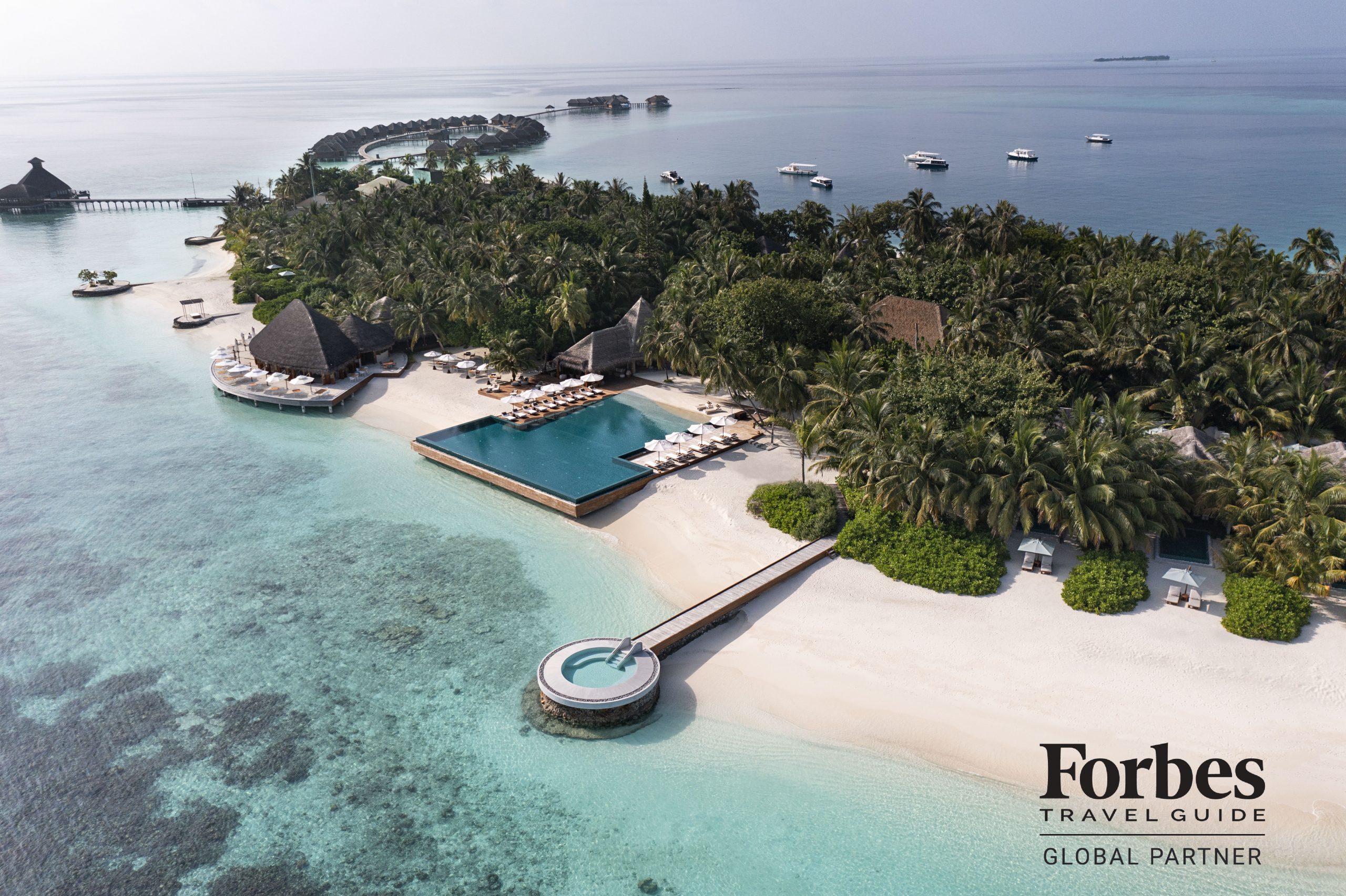
Huvafen Fushi, the resort internationally recognised for pioneering signature Maldivian luxury, has announced its official association with Forbes Travel Guide (FTG), the only independent global rating system dedicated to luxury hospitality.
The decision marks a deliberate step for the resort, underscoring its commitment to meeting the gold standard of intuitive service on an international scale. After two decades of setting architectural and experiential milestones—such as unveiling the world’s first underwater spa and introducing the Maldives’ first underground wine cellar, Vinum—Huvafen Fushi is now focused on demonstrating its exceptional service culture against the industry’s most rigorous and objective criteria.
The resort’s ultimate aim is to attain the prestigious Forbes Travel Guide Five-Star rating in 2026.
General Manager Noel Cameron stated, “For Huvafen, luxury is effortless and authenticity shines through. Our brand has always been about trailblazing and crafting moments that transcend the ordinary. Now, we’re putting our confidence to the test by inviting the global authority on luxury to evaluate the very core of our offering: the quality and consistency of how we make our guests feel.”
Unlike rating systems that rely on volume or guest reviews, the FTG evaluation process is entirely independent, with anonymous professional inspectors assessing properties based on up to 900 stringent standards. The criteria place significant weight on emotional connection and anticipatory service—the subtle, intuitive gestures that have long defined Huvafen’s approach.
This partnership marks a new chapter for Huvafen Fushi, reflecting its evolution towards uncompromising, verified excellence. It positions the resort to resonate even more strongly with discerning, forward-thinking travellers seeking authentic connection and meaningful transformation.
Celebration
Sun Siyam Olhuveli kicks off festive season with Charith N. Silva Cake Mixing

Sun Siyam Olhuveli has ushered in the holiday season with a new twist on its much-loved annual Festive Cake Mixing event, held on 23 November. This year, the celebration was led by acclaimed Sri Lankan chef and viral social media personality Charith N. Silva, the creative force behind @wildcookbook and one of South Asia’s most influential culinary storytellers.
Charith, a sensation across YouTube, TikTok, and Instagram with an audience of several million, is widely recognised for his bold fire-cooking techniques, visually striking outdoor food rituals, and distinctive, high-energy narrative style. He recently secured a coveted place on the Forbes 30 Under 30 Asia 2025 list in the Arts (Art & Style, Food & Drink) category, underscoring his growing influence on contemporary food culture in the region. He is one of a new wave of young chefs blending local flavours with global inspiration and is the owner of the restaurant “Wildish” in Colombo.
Bringing his creative flair to Sun Siyam Olhuveli, Charith said, “Bringing my energy to Sun Siyam Olhuveli was surreal; the people, the Maldivian spirit, the flavour play, everything clicked into one unforgettable festive moment.”
This year’s cake mixing unfolded like an island celebration, complete with lively music, bursts of aromatic spices, and an energetic atmosphere. Resort teams and guests layered fruits, nuts, and spirits in a spirited display, with Charith driving the momentum through his trademark spontaneity. The result was a vibrant, social, and playful reimagining of a classic festive tradition.
Festivities continued on 24 November with an exclusive live cooking demonstration by Charith, giving guests the chance to experience his signature “wild” cooking style firsthand against the lagoon backdrop of the resort.
“This celebration reflects the new creative pulse of Sun Siyam Olhuveli. Charith brought an energy that aligns perfectly with our evolving lifestyle identity, making this year’s cake mixing one of our most memorable yet,” said Hassan Adil, General Manager at Sun Siyam Olhuveli.
With the festive season now in full swing, Sun Siyam Olhuveli invites guests to join MYSTIVAL 2025–2026, the resort’s year-end celebration taking place from 21 December 2025 to 8 January 2026, featuring hypnotic beats, immersive dining, playful rituals, and a series of kaleidoscopic island experiences designed to inspire connection and celebration.
Cooking
Cooking with culture: Maldivian Kandu Kukulhu at Sun Siyam Vilu Reef
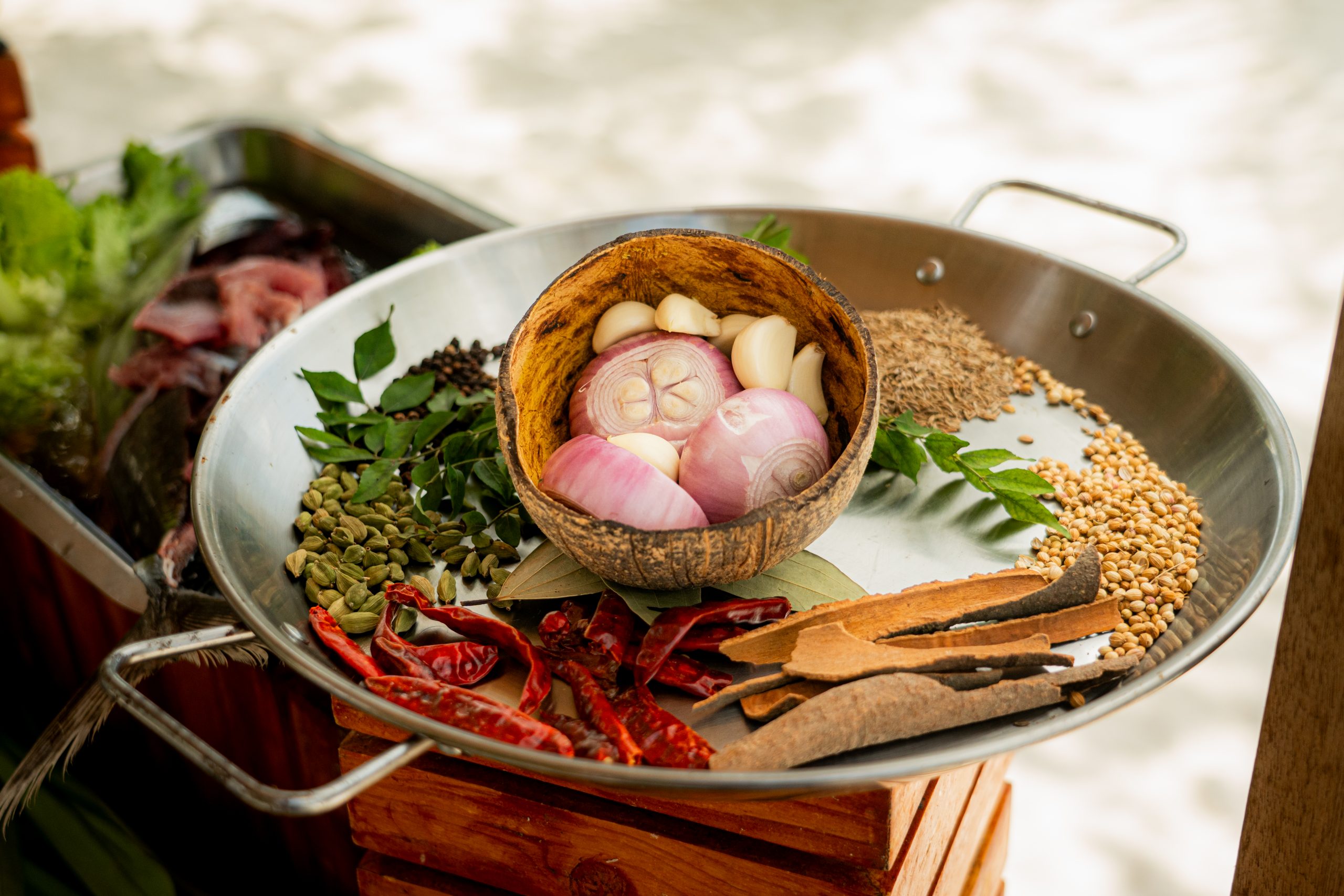
At Sun Siyam Vilu Reef, Maldivian cuisine is celebrated not simply as nourishment but as an expression of island heritage and identity. Among its most significant traditions is the preparation of Kandu Kukulhu, the Maldives’ signature rolled tuna curry. Rooted in local custom and passed down through generations, the dish forms the centrepiece of the resort’s weekly Maldivian cooking classes, offering guests an intimate introduction to the flavours, techniques, and narratives that shape the islands. As part of the resort’s signature culinary journey, it brings Maldivian culture to life through authentic tastes and thoughtful storytelling.
Deeply embedded in local tradition, Kandu Kukulhu reflects centuries of craftsmanship and care. At Vilu Reef, the cooking class is led by the resort’s Maldivian chefs, who demonstrate each stage with the precision and intuition inherited through long-standing practice. Guests learn how to slice the tuna, layer it with aromatic spices, and bind the rolls with coconut or pandan leaf. As the curry gently simmers in coconut milk, its aroma fills the air, offering a vivid portrayal of everyday island cooking—an experience that resonates long after the final tasting.
Kandu Kukulhu, which translates to “chicken of the sea,” is a quintessential Maldivian tuna curry and a powerful tribute to the nation’s enduring connection to the ocean.
“Sun Siyam Vilu Reef’s culinary story celebrates Maldivian heritage, moving beyond simply serving fresh seafood,” said Chef de Cuisine Mohamed Hameed, known as Chef Printey. “It is a connection to our islands, our people, and the traditions that shaped Maldivian cuisine. By sharing these methods, we bring our cultural narrative to life in the most sincere way.”
The cooking class forms a key part of the Maldivian Roots Signature Experience, which highlights the flavours, crafts, and cultural expressions that define the Maldives. It reflects Sun Siyam’s philosophy of celebrating island life through meaningful encounters and genuine Maldivian spirit. The experience is available to all guests at Sun Siyam Vilu Reef and can be booked in advance during their stay.
-
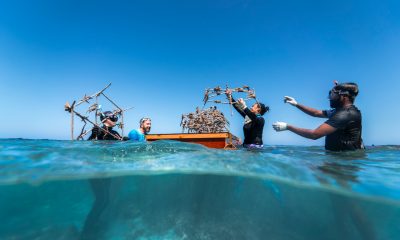
 Action1 week ago
Action1 week agoW Maldives sets coral restoration benchmark with Sea of Stars activation
-
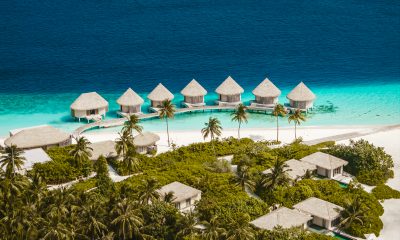
 News6 days ago
News6 days agoCelebrate UAE National Day with exclusive island escape at InterContinental Maldives Maamunagau Resort
-
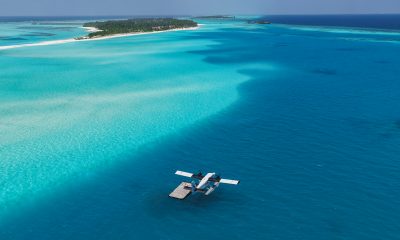
 Featured4 days ago
Featured4 days agoVilla Park now accessible via new Villa Air seaplane route
-
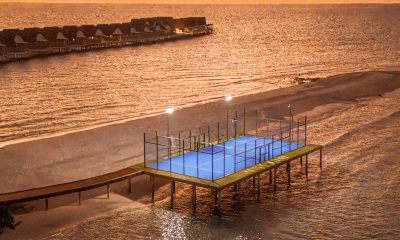
 Featured6 days ago
Featured6 days agoWorld-first overwater padel tennis court launched at Meyyafushi Maldives
-

 News6 days ago
News6 days agoDive into festive offers, Black Friday offer at Dhawa Ihuru
-
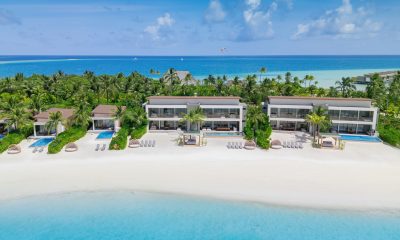
 Awards5 days ago
Awards5 days agoKuda Villingili ranked 5th in Condé Nast Traveller Middle East’s top overseas leisure resorts 2025
-

 Action6 days ago
Action6 days agoKuramathi Maldives to host 2-week Campioni football experience in 2026
-

 News6 days ago
News6 days agoHonour UAE National Day with curated escapes at Four Seasons Resorts Maldives







